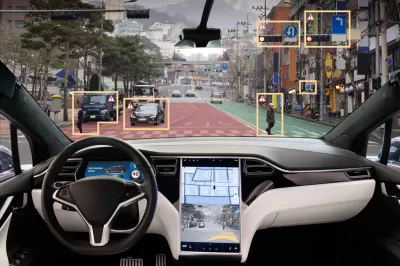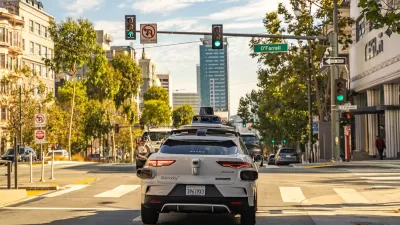Two major automakers have petitioned for the right to test thousands of vehicles without major safety features such as brake pedals and steering wheels.

Petitions from Ford and General Motors to exempt some vehicles with Automated Driving Systems (ADS) from human-operated safety controls are facing criticism from the National Association of City Transportation Officials (NACTO), which claims that the automakers are trying to avoid regulations that help ensure road safety. In an article for Streetsblog, Eve Kessler describes the complaints lodged by NACTO in a letter to the National Highway Traffic Safety Administration (NHTSA).
Automakers for years have tried to get more AVs on American streets even as evidence mounts that the machines aren’t as smart as the companies think they are and pose a danger to pedestrians and other vulnerable road users.
The companies want to introduce 2,500 vehicles annually that would be used for delivery and ride sharing services and forgo steering wheels, brake pedals, and mirrors—“that is, the controls that lets humans take over if the high-tech machinery goes haywire.” According to NACTO’s letter to federal regulators, “The companies ‘must not only establish that the controls, telltales, and devices aren’t needed for vehicles controlled by an ADS, but also prove that the ADS can successfully respond in a manner at least as safe as a nonexempt vehicle with a human driver would.’”
NACTO is also calling on the NHTSA to develop standards specific to autonomous vehicles “in ways that won’t lead to more road deaths and the destruction of cities,” which NACTO has laid out in their Blueprint for Autonomous Urbanism.
FULL STORY: NACTO Pushes Back as Big Auto Seeks Safety Exemption for Driverless Cars

Study: Maui’s Plan to Convert Vacation Rentals to Long-Term Housing Could Cause Nearly $1 Billion Economic Loss
The plan would reduce visitor accommodation by 25,% resulting in 1,900 jobs lost.

North Texas Transit Leaders Tout Benefits of TOD for Growing Region
At a summit focused on transit-oriented development, policymakers discussed how North Texas’ expanded light rail system can serve as a tool for economic growth.

Why Should We Subsidize Public Transportation?
Many public transit agencies face financial stress due to rising costs, declining fare revenue, and declining subsidies. Transit advocates must provide a strong business case for increasing public transit funding.

How to Make US Trains Faster
Changes to boarding platforms and a switch to electric trains could improve U.S. passenger rail service without the added cost of high-speed rail.

Columbia’s Revitalized ‘Loop’ Is a Hub for Local Entrepreneurs
A focus on small businesses is helping a commercial corridor in Columbia, Missouri thrive.

Invasive Insect Threatens Minnesota’s Ash Forests
The Emerald Ash Borer is a rapidly spreading invasive pest threatening Minnesota’s ash trees, and homeowners are encouraged to plant diverse replacement species, avoid moving ash firewood, and monitor for signs of infestation.
Urban Design for Planners 1: Software Tools
This six-course series explores essential urban design concepts using open source software and equips planners with the tools they need to participate fully in the urban design process.
Planning for Universal Design
Learn the tools for implementing Universal Design in planning regulations.
Ascent Environmental
Borough of Carlisle
Institute for Housing and Urban Development Studies (IHS)
City of Grandview
Harvard GSD Executive Education
Toledo-Lucas County Plan Commissions
Salt Lake City
NYU Wagner Graduate School of Public Service





























